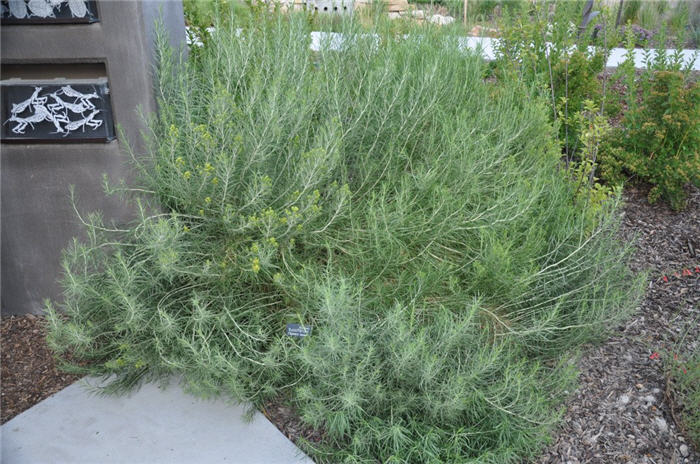| Botanical Name: Chrysothamnus nauseosus | |
| Common Name: Rubber Rabbitbrush |

-
Anatomy
-
Culture
-
Design
Plant Type
Shrub
Height Range
3-6'
Flower Color
Yellow
Flower Season
Fall
Leaf Color
Grey Green
Bark Color
Grey, White
Fruit Color
n/a
Fruit Season
n/a
Sun
Full
Water
Very Low, Low
Growth Rate
Moderate, Slow
Soil Type
Sandy, Clay, Rocky
Soil Condition
Average, Poor, Well-drained, Dry
Soil pH
Neutral, Basic
Adverse Factors
Invasive
Design Styles
Mediterranean, Ranch, Spanish
Accenting Features
Showy Flowers
Seasonal Interest
Winter, Fall
Location Uses
Background, Shrub Border, Foundation, Walls / Fences, With Rocks
Special Uses
Erosion Control, Mass Planting, Naturalizing
Attracts Wildlife
n/a
Information by: Stephanie Duer
Photographer: Mountain States Nursery
Photographer: Mountain States Nursery
-
Description
-
Notes
Rubber rabittbrush is a Utah native, known for its chrome-yellow autumn flowers and strikingly white stems. This plant will reach a mature size of about 4 to 6 feet tall and wide. Fall flowers are chrome-yellow and cover the entire plant. Foliage is long, narrow, grey-green, and slightly hairy, giving it a whitish cast. It is semi-deciduous, and will hold its foliage well into the autumn and early winter. A great shrub for a hot, dry site.
Grow in well drained, clay-loam to sandy-loam soil in full sun. Will tolerate high pH soils, even up to 8.5 pH. Very drought tolerant on establishment, requiring no supplemental water. Pruning hard in late winter helps to keep it tidy. It may spread by re-seeding (okay, it probably will spread by re-seeding). Cold hardy to -30f